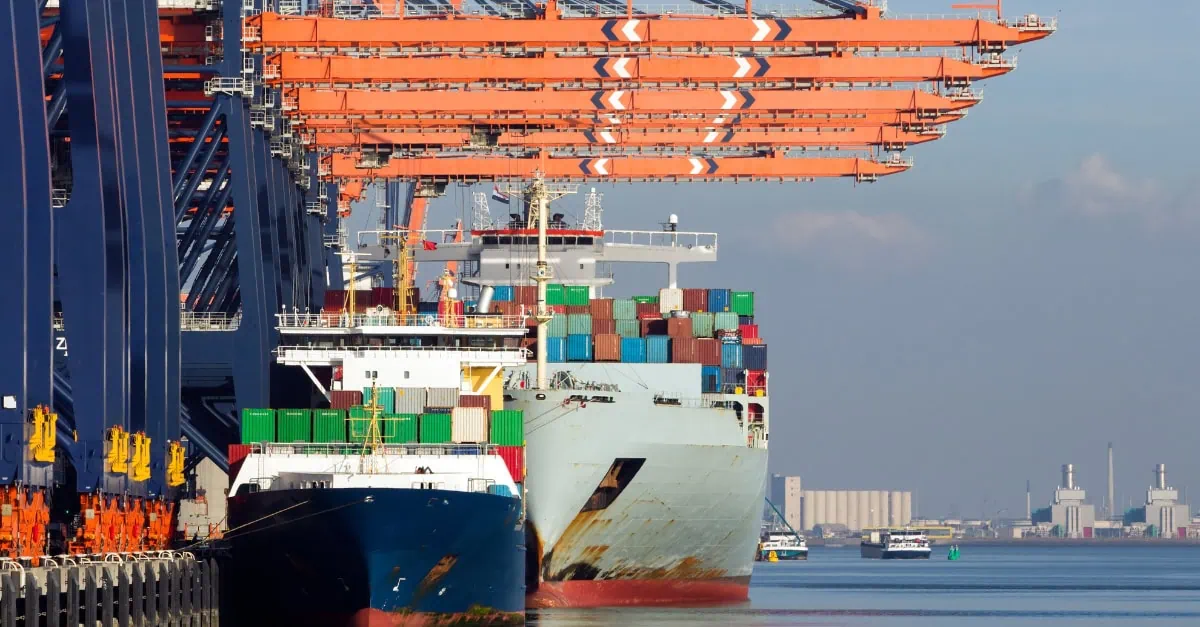July 28, 2025 – Market Analysis
After weeks of intense negotiations, the European Union and the United States have struck a framework trade deal, narrowly avoiding a potential trade war and locking in a 15% tariff rate on most EU exports to the U.S.
Key outcomes include:
- European carmakers face 15% U.S. import taxes instead of 25%
- Some sectors (aircraft, medical devices, alcohol) may receive exemptions or lower rates
- Steel and aluminum tariffs remain at 50%, maintaining pressure on industrial supply chains
- The U.S. expects $90 billion in annual tariff revenues from the agreement
Ongoing pressure on space and rates first half of August
Current bookings are fully booked, causing some shipments originally scheduled for July to be postponed to the first week of August. We expect ongoing pressure on both space availability and freight rates during the first half of August, driven by equipment shortages and congestion at several European ports.
While spot container freight rates on the transpacific and Asia-Europe routes continued to soften this week, the demand for timely bookings remains high.
To secure space on vessels and avoid further delays, we strongly encourage shippers to submit their bookings well in advance.
European port congestion impacts commodity supply chains
Major European ports continue to face operational challenges that are particularly relevant for companies managing agricultural commodity procurement teams.
Rotterdam under pressure
The average size of container ship calls has grown significantly, now averaging 8,000 TEU per vessel—larger ships that stay docked for up to 60 hours, 20 hours longer than five years ago. This increase is partly a consequence of the longer sailing routes around the Cape of Good Hope, causing ships to arrive fuller and offload more containers at once.
Despite terminals running 24/7, the hinterland transport network struggles to keep up. Low water levels on the Rhine have reduced barge capacity, while road networks suffer from heavy peak-time traffic. The port authority is implementing digital solutions to improve transparency and spread cargo flows beyond peak hours.
Antwerp delays 2 to 5 days
Antwerp mirrors Rotterdam’s struggles. Terminals face high yard occupancy rates made worse by ongoing construction work, resulting in average vessel delays of 2 to 5 days. Labor shortages present additional concerns, with the upcoming summer holidays expected to worsen the situation.
Like Rotterdam, Antwerp has seen increased call sizes, pushing container handling capacities to their limits. Teams are now planning container movements with transporters up to a month in advance to secure timeslots and reduce delays.
Hamburg delays 1-2 days
Hamburg continues to experience yard utilization rates between 85% and 90%, with terminal backlogs made worse by the temporary closure of a key rail terminal. Average delays are currently 1 to 2 days, with the port working to restore rail capacity and ease congestion.
Bremerhaven is experiencing moderate congestion but remains more stable than Hamburg, while Wilhelmshaven, focused on container transshipment and bulk cargo, is less affected by congestion than the major hubs.
Supply chain implications for commodity procurement
These developments create important considerations for companies managing agricultural commodity supply chains:
The combination of port congestion and new tariff structures will influence procurement costs and delivery schedules. The 15% EU-US tariff rate, while lower than initially threatened, still represents an increase that will factor into sourcing calculations.
For companies dealing in steel and aluminum packaging materials, the maintained 50% tariff rate continues to present cost pressures for industrial supply chains.
Current container shipping shows a 7% blank sailing cancellation rate, with Asia to Europe and Mediterranean routes accounting for 33% of total cancellations.
For the full market analysis visit: https://app.vespertool.com/market-analysis/2133
